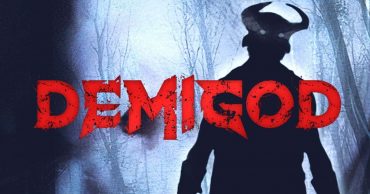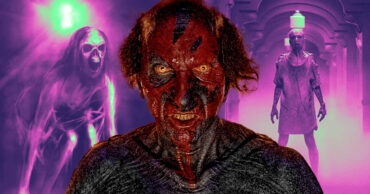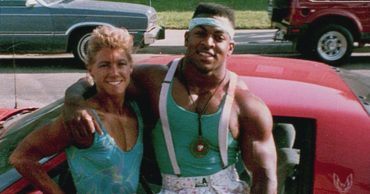If there’s one element most people remember about Dune, it’s likely the sandworms. Altogether, it’s no secret why. The gigantic annelids are an imposing presence that establishes stakes, deeply rooted in the lore and backstory Frank Herbert built. To top that off, they’re incredibly cool.
This last point is likely why so many others have tried to borrow, reference, or outright steal the idea. What better way to up the drama and action than colossal worms that can devour all the main characters in a single bite? Some have done it better than others, and some have gone for comedic over fearsome, but these are a few of the best references to Dune’s sandworms.
Tremors – Graboids

Where Herbert’s sandworms are a potent allegory for colonialism, environmentalism, and a dozen other political messages, it was only a matter of time before someone transplanted them into a goofy creature feature. The best known is surely the 1990 film Tremors (and its many sequels). A group of these monsters attacks the small desert town of Perfection, Nevada. In the process, they gulp down residents, animals, and vehicles, while the humans of the town desperately try to defend themselves.
That’s not to say there’s no subtext worth exploring. The second film establishes that the creatures are Precambrian, predating all but the most simplistic forms of life on the planet. This battle of humanity vs. nature is one of the oldest in fiction. While Tremors leans towards the “humans can win” side of the argument, presenting it at all sets it closer to Dune than may appear at first glance.
The Mandalorian – Greater Krayt Dragon

While the Sarlacc is almost certainly the most infamous desert monster in Star Wars (and was likely inspired by Dune, as many elements of Star Wars famously were), the comparisons end fairly quickly. The Sarlacc is stationary, while Shai Hulud can swim through the sand. This makes the Greater Krayt Dragon from Season 2 of The Mandalorian a much closer reference. While the Krayt technically has legs, all appearances on screen make it look more like a snake/shark hybrid than any kind of lizard. And seeing a giant toothed maw breach the sand will always evoke Dune’s famous worms.
Love and Monsters – Sand Gobbler

While never seen anywhere near sand in the film, 2020s Love and Monsters featured a monster called the Sand Gobbler which took many elements from Dune. From the lamprey-like toothed mouth to the sound sensitivity to the telltale furrow of disturbed earth, it hits all the tropes. But despite the lack of sand and the tentacled mandibles (seemingly borrowing more from the Sarlacc), it has the fingerprints of the desert dwellers all over it.
Beetlejuice – ???

Easily the strangest on this list are the unnamed sandworms from the 1988 Tim Burton film Beetlejuice. After their premature demise, Adam and Barbara Maitland find that they are unable to leave their house. If they attempt to exit any door, they find themselves suddenly transported to a desert land referred to in the script as “Saturn,” populated by giant multi-mouthed worms. While there are distinct visual differences (the black and white stripes, for example, mark them indelibly as Tim Burton creatures), the resemblances to Dune are plentiful. The desert landscape, the toothy gullet, and the fact that Barbara rides one to dispatch the titular Beetlejuice finally all evoke the great Makers of Arrakis.
Legend of Zelda – Twinmold

Many video game designers have experienced the pure grandeur of Dune’s Empire-State-Building-sized snakes and clearly thought it would be a fantastic addition to a game. Of these, the most enduring example can be found in The Legend of Zelda. Nearly every Zelda game has a desert area of some kind, and most of them include some kind of burrowing sandworm as either a standard monster or a boss. One of the more memorable of these is Twinmold from Majora’s Mask, where Link had to don a mask, causing him to grow to an enormous size to defeat the sand-swimming insects.
Nausicaä of the Valley of the Wind – Ohmu

The Ohmu are the primary narrative catalyst of Hayao Miyazaki’s Nausicaä of the Valley of the Wind. These bear a little physical resemblance to the Sandworms of Dune, looking more like pillbugs than the gargantuan Shai-Hulud. But according to Miyazaki himself, the Ohmu are partly inspired by Dune’s Sandworms.
The name “Ohmu” is actually a pun on the word “King Bug” (Oh-Mushi) and the way Sandworm is pronounced in Japanese (Sando Uohmu). Of all the references on this list, the Ohmu are the ones that borrow most from the Sandworms’ narrative role rather than their physical appearance. Overall, the story takes great pains to make it unclear whether they are malevolent or benevolent.
Men in Black 2- Jeff

Then there’s Jeff from Men in Black 2. A giant spiky-toothed worm alien that lives in New York’s abandoned subway lines, Jeff has entered into an agreement with the Men in Black to stay only in unused tunnels in exchange for an endless supply of garbage to eat. If Nausicaa went to great trouble to make their worms complex and nuanced, MIB went in the exact opposite direction. They presented a 600-foot snake with an adorable little flower on its head that could eat subway cars. To top it off, it is “humorously” given the most generic human name imaginable. But even so, giant worms living under the feet of unsuspecting people is undeniably Dune, and it has to get at least a few points for that.
 Follow Us
Follow Us





